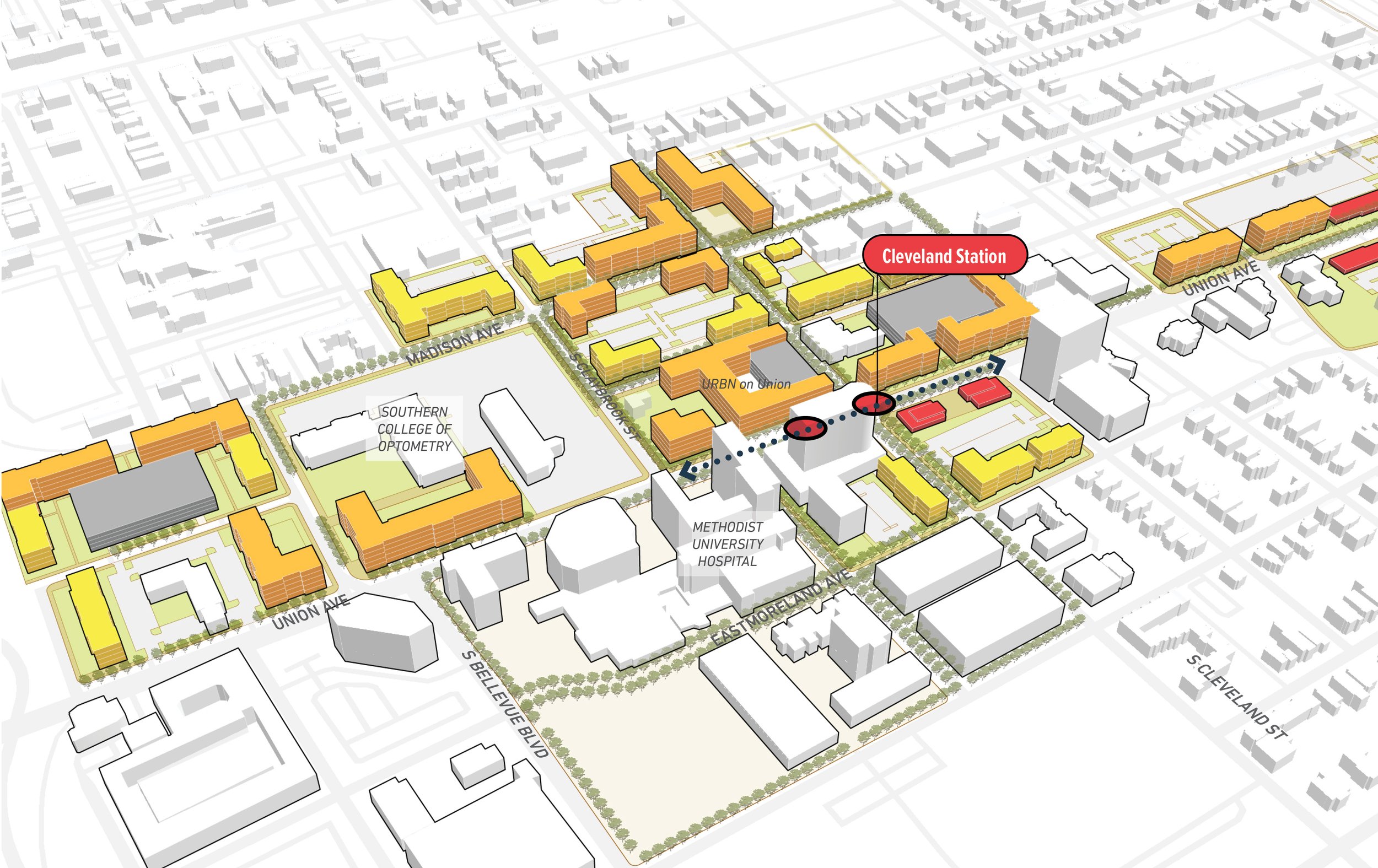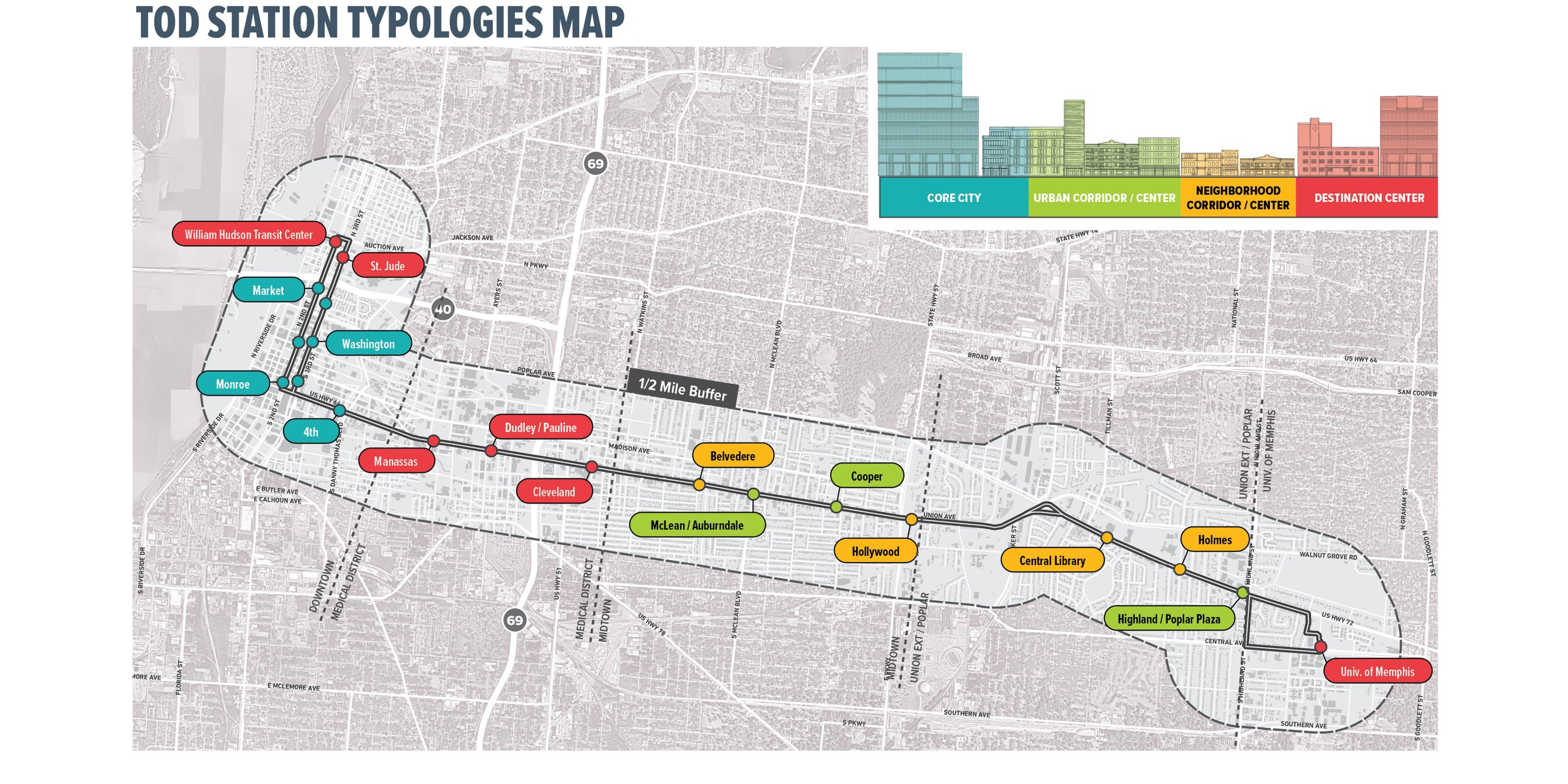
Memphis Innovation Corridor Transit Oriented Development Plan Memphis, Tennessee
Services Provided
Transportation/Mobility-Oriented Development
Community Planning
Land Use Planning
Community Engagement
People Involved
Chris Hermann
Sean Hare
Feature Website Link
BRT station area development planning along Memphis’ Innovation Corridor
MKSK collaborated with Nelson\Nygaard, the City of Memphis, and numerous local stakeholders to develop development plans and strategies to support the upcoming Bus Rapid Transit initiative along the Memphis Innovation Corridor. Our role focusedd on physical analysis, identifying key development sites, and creating a development vision for each of the 17 station areas along the corridor. The final recommendations of the plan include station area development strategies backed by a market analysis and identified public realm and multi-modal connectivity improvements.
Engagement for the project included meetings with the public, focus groups, and a stakeholder committee. The team held virtual meetings as well as a day long engagement tour along the corridor. This engagement tour involved setting up at several key locations along the corridor to discuss the conceptual development plans and connectivity planning with future corridor users. These locations included a local library, park, the University of Memphis, and AutoZone Ballpark.
The process engaged with local incentive makers such as the Downtown Memphis Commission and the Memphis Medical District Collaborative, developers, key institutions like the University of Memphis, and the public.
In addition to creating development plans for the station areas, MKSK conducted an audit of current zoning along the corridor and developed recommendations for future zoning changes to facilitate the implementation of the vision set out in this plan.
What makes this plan unique is its ability to impact the City of Memphis on both a large and small scale. Specific station area improvements and development will change the hearts of neighborhoods and communities, while the collective corridor improvements will drive long term economic change for the region.




